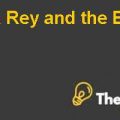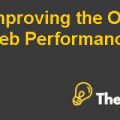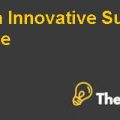
1.1 Problem Statement
Deloitte LLP (2010) points out at the ruthless talent winning war among organizations around the world and their realigning of corporate human resources branding, practices and policies to mitigate the risk of talent limitations which has direct effect on performance and growth.
The market surveys clearly points towards uncertainty as to what strategies shall be adopted for talent retention and development, despite high focus from the organizations. It is further evident from literature review that most of the organizations have failed to develop, maintain, realign and enhance their brand identity properly and as a consequence talent shortcomings can have considerable impact on competitive and strategic advantage (Ambler, T., & Barrow, S., 1996, Boshard & Louw, 2010; Botha et. al., 2011, Charest, 2011, Cheese et. Al. 2007).
1.2 Research Objectives & Purpose
On what foundation blocks the Organizations in Alberta shall build their brand models and develop growth strategies so as to attract, retain and develop the Talent.
This study is intended to provide Human Resource Functionaries, Senior Managers and Team Leaders a framework to retain, develop and nurture a long-term relationship with employees thus augmenting overall business performance and marketability.
1.3 Research Questions
Question 1: How to retain Talent in Alberta’s booming O&G economy?
Sub Q. 1.1: What are the motivating factors for Talent in Alberta?
Sub Q. 1.2: Which retention tools can be utilised to overcome Talent migration?
Question 2: How to develop Talent to support Organization’s strategic plans?
1.4 Thesis Structure
Chapter 1: Introduction
This chapter is comprised of overview, Alberta’s O&G economy, problem statement, research objectives, research questions, and thesis structure.
Chapter 2: Research Design & Methodology
This chapter describes how the research is performed and covers the approach, strategy, design, method, limitations and quality.
Chapter 3: Background & Literature Review
This chapter focuses on theoretical foundation of theses by discussing Basic Theories of Motivation and thorough literature review to seek answers to the research questions. The chapter ends with synthesis of essential information.
Chapter 4: Empirical Study
This chapter covers five case organizations Org1, Org2, Org3, Org4 and Org5. The motivation factors and retention & development tools employed by case organizations are studied though interviews and surveys.
Chapter 5: Analysis & Findings
This chapter links the empirical findings to the theoretical framework in order to formulate answers to the research questions. Based on motivational factors of both Eastern and Western cultures, the retention & development tools employed by case organizations are analysed.
Chapter 6: Conclusions & Recommendations
This chapter summarises the conclusions made on the basis of analytical findings for solving the research questions. The limitations of the research are highlighted. The chapter ends up with recommendations and future research on the subject.
CHAPTER 2: RESEARCH DESIGN & METHODOLOGY
This chapter starts with the research approach taken and the reasoning for choosing it. Further, it covers different research methods and explanation of their utilization for this particular research.
2.1 Research Approach & Strategy
In order to make it more interactive, reliable and resulting, the abductive (combination of deductive and inductive) approach has been utilised for constructing the building blocks of this research (Dubois & Gadde, 2002; Spens & Kovacs, 2006).
The research began with the identification of the boundaries of the topic - Talent Management. Talent attraction got brief attention with main focus revolving around talent retention and development. A thorough background information review identified problem areas based on which research problem got derived and corresponding framework modelled for resolution. The theoretical findings were compared with the results of surveys and interviews; resulting in validity of theoretical findings and hypothesis.
2.1.1 Research Strategy
The case study research strategy has been utilised with mostly ‘How’, ‘What’ and ‘Why’ type of questions. Out of four main case study designs; embedded-multiple has been utilised with focus on five organizations from three different sectors – engineering, construction and owner/operator.
2.2 Research Method
As Alberta’s economic problem is only 8 to 10 years old, qualitative research methodology has been adopted because contrary to quantitative, it addresses the situation without relying on statistics, predictions, generalization or quantifications (Mansourian et. al., 2006).
2.2.1 Interviews
The structured interview kind (in-person) has been adopted with carefully designed questionnaires with reference to problem questions and insight gained through literature review. Appropriate levels of staff and management positions, Appendix 1, have been chosen to cover the broad spectrum and test management perception against staff visualization of the employed people strategies.
2.2.2 Individual Survey
The Delphi Participation technique has been adopted with 45 participants chosen, Appendix 1, and 41 responses received covering all five interview organizations.
2.2.3 Employee Engagement Survey
Org1 conducted an annual employee survey in which two questions, Appendix 1, were modified based on input from the author...................................
This is just a sample partial case solution. Please place the order on the website to order your own originally done case solution.











